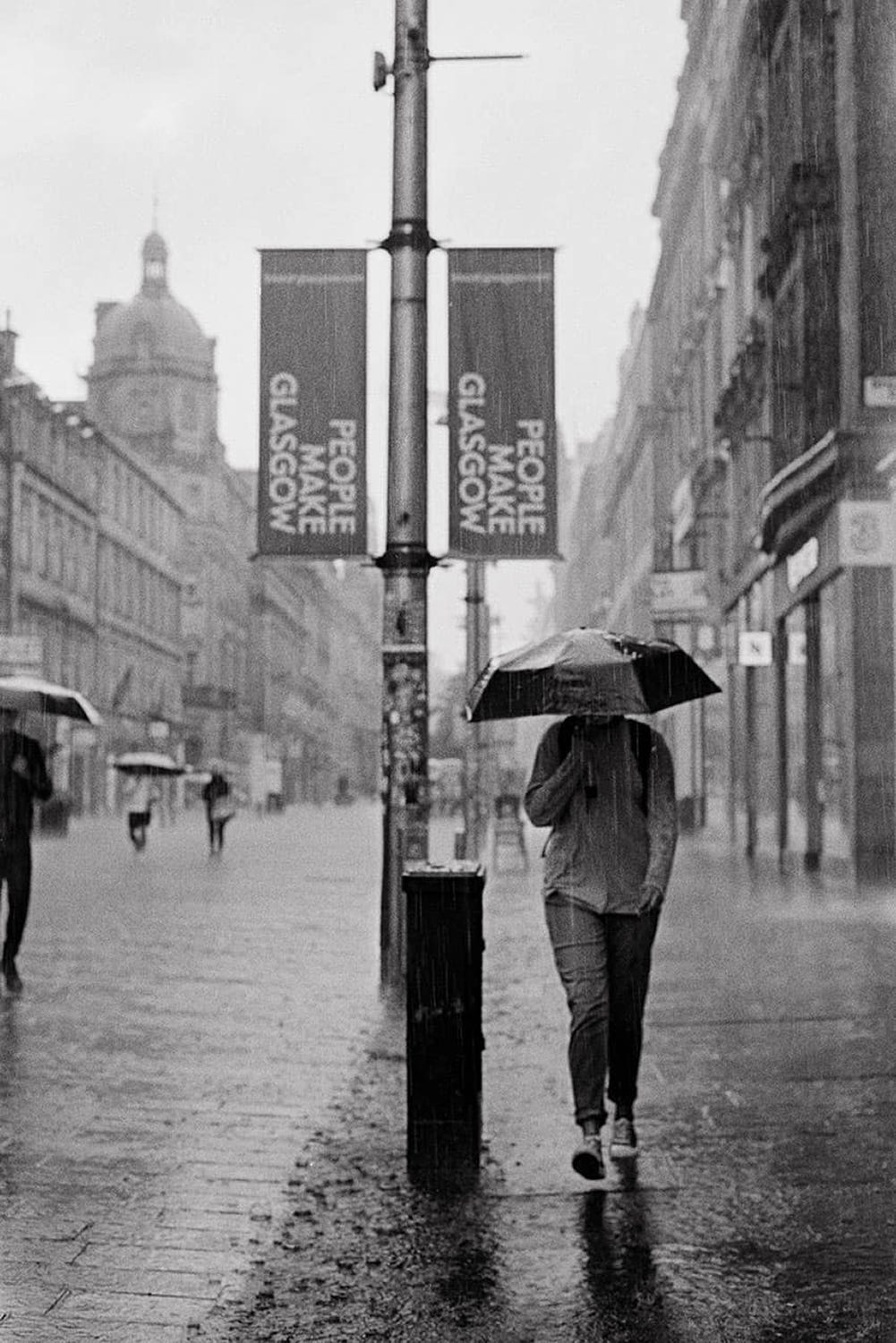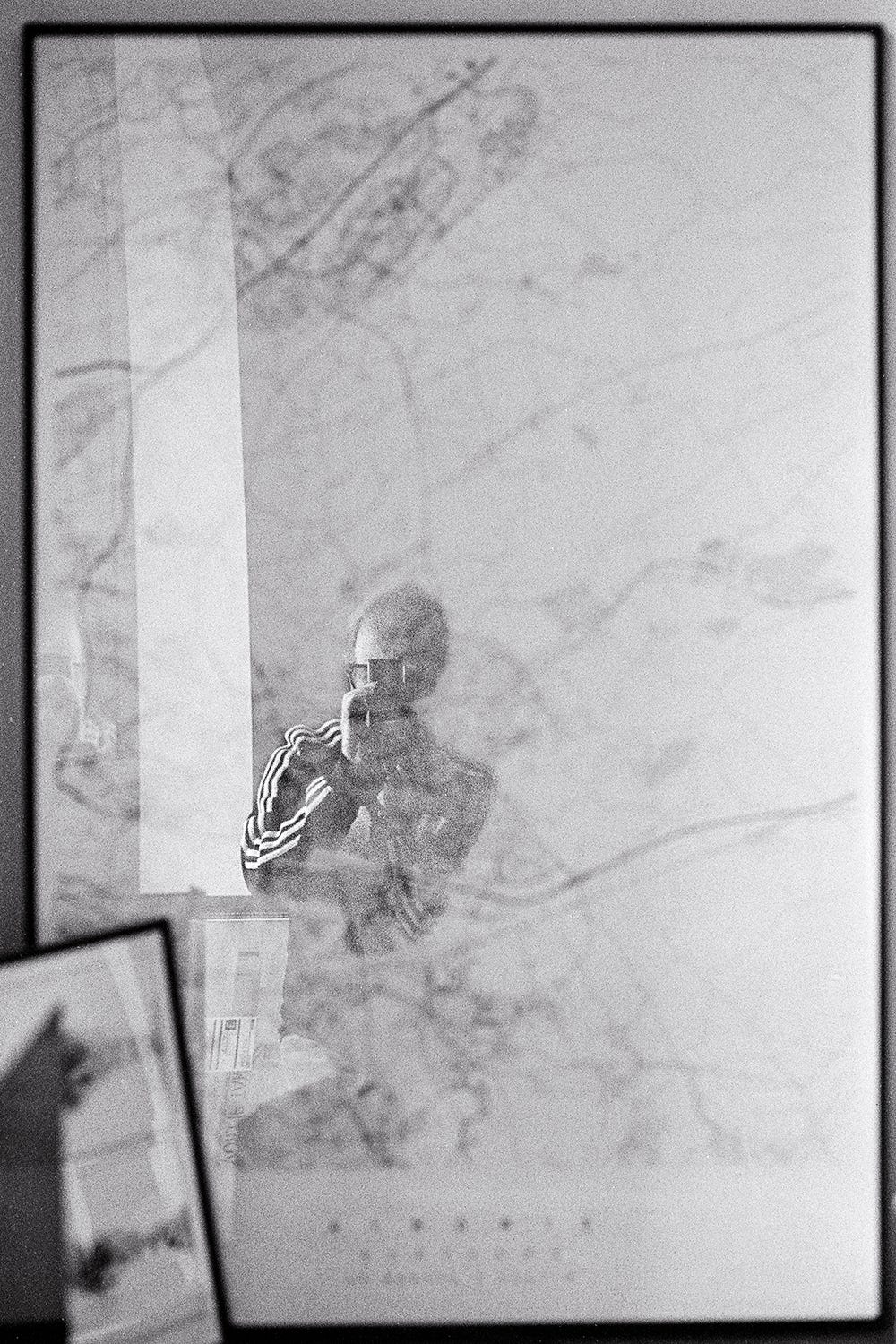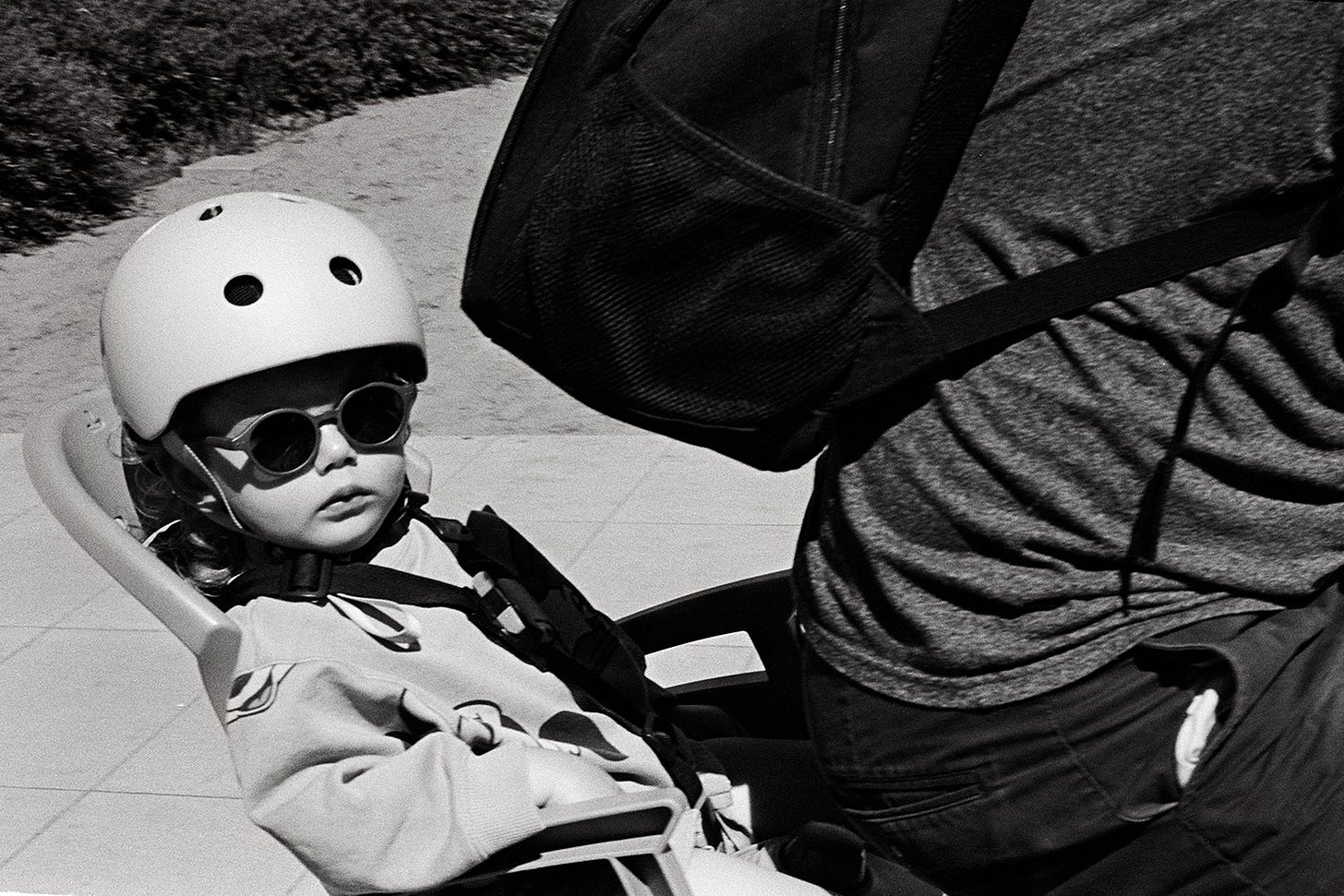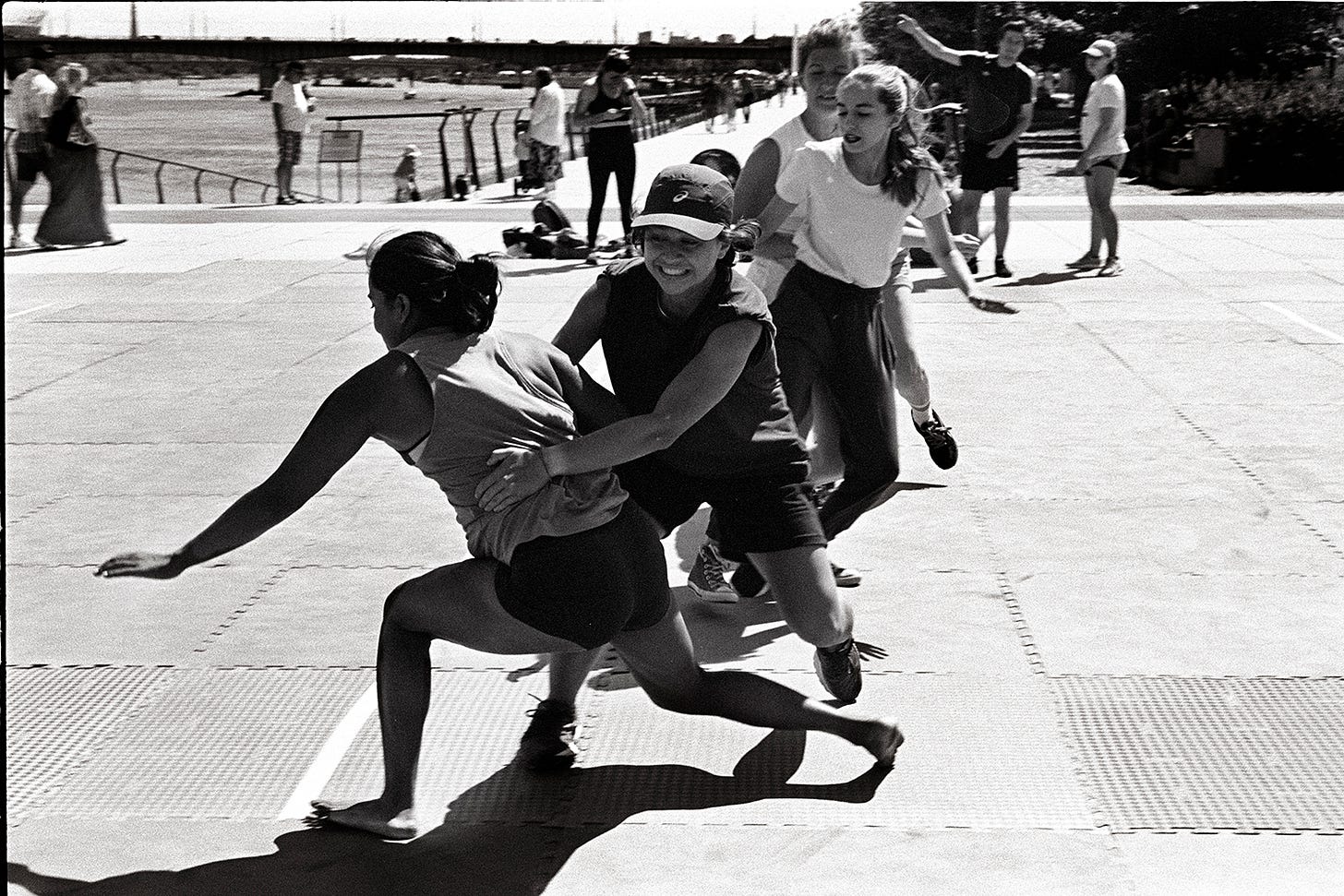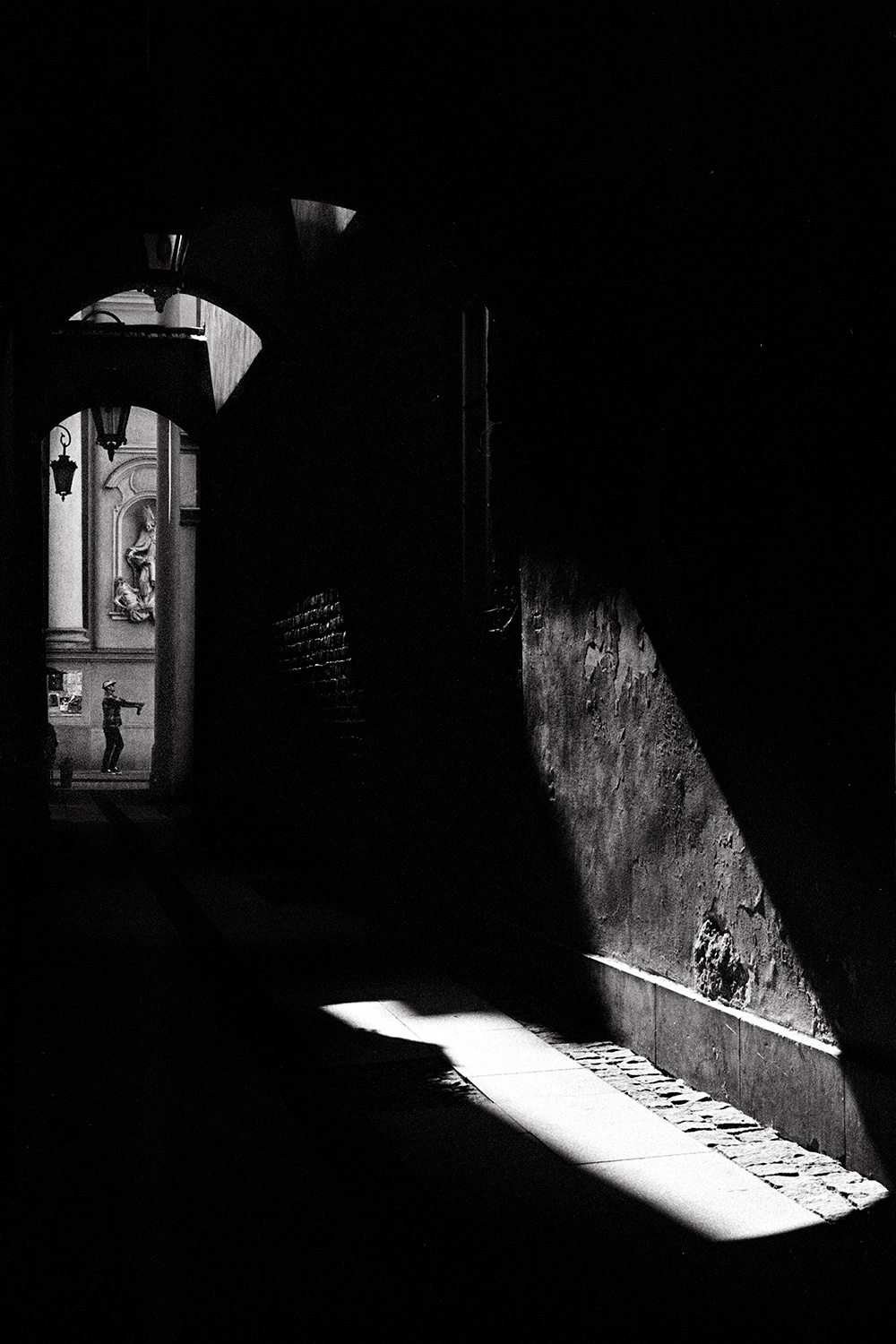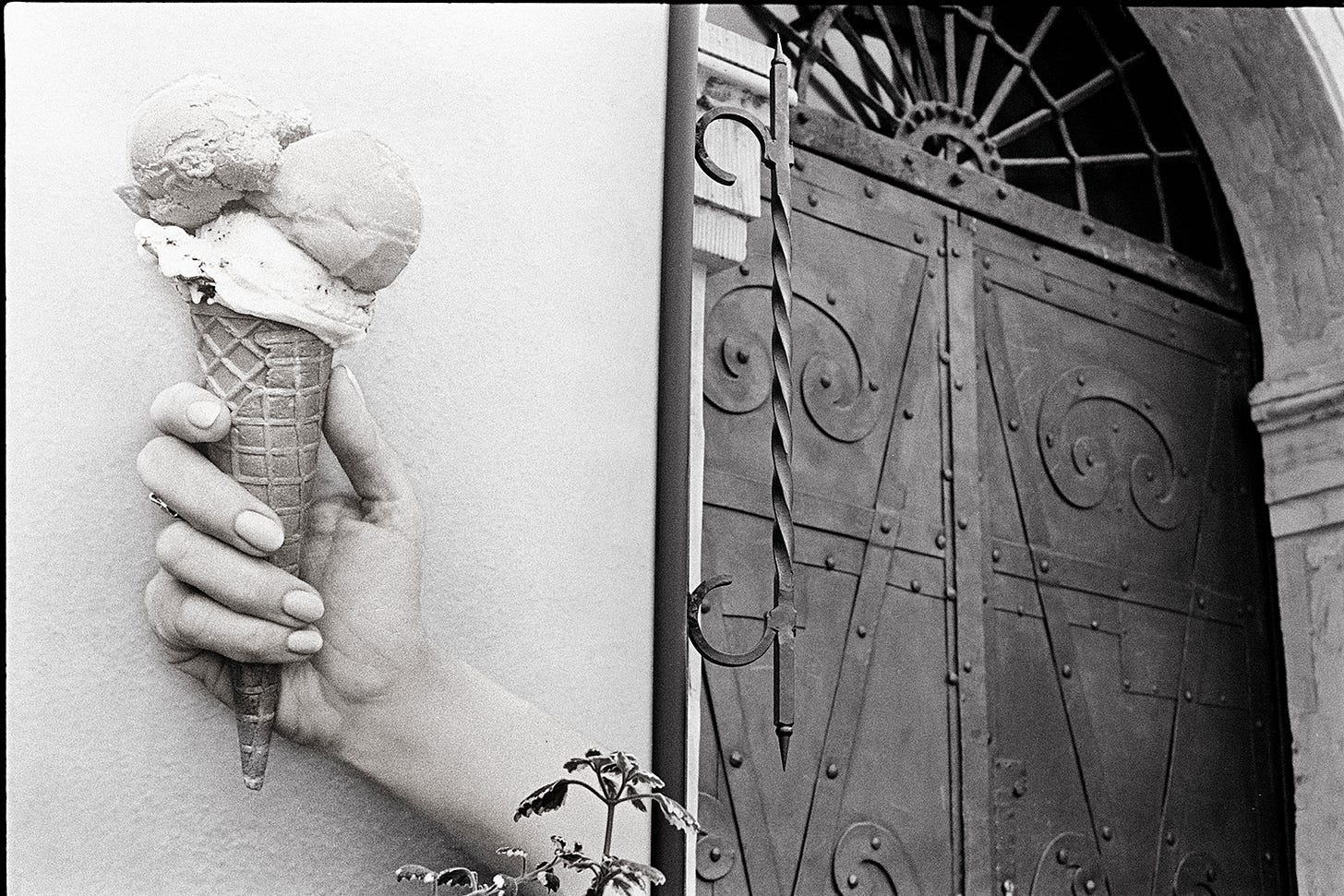Issue 06: Embracing the Imperfect
Or: The Experience of Shooting Street Photography on Film
Having started in street photography using digital cameras over a decade before moving to film, I have generous experience in both. Since loading my first roll of Tri-X a few years ago, it continues to surprise me when a stranger, suspicious of me having taken their photograph, softens when they see an analogue camera in my hand. Maybe it is nostalgia for all things retro, deference to an inferred professional, or pity for an ageing hipster. Either way, the film camera around my wrist often takes the fire from the eyes of the aggressor and immunises me from accusations of nefarious deeds.
There is no doubt in my mind that setting aside the multitudinous menu options and automatic functions of digital cameras, to shoot with what is an expensive, albeit precisely engineered, light-proof box has made me a better street photographer with a gradually developing personal style and voice. There is so much to be said about shooting street photography on film, this month I thought I might consider what took me to film and what I've learned so far.
Embracing the imperfections
Returning to photography after a lengthy hiatus, a move to film was part experiment, part curiosity, and part convenience. Neither my partner nor I owned a digital camera, yet when the pandemic led me back to photography, there were 2 film cameras gathering dust on a shelf. I had the choice of buying a digital camera and throwing Alien Skin's Exposure Tri-X black-and-white emulation over every photograph, or enduring the learning curve and shooting with the real thing. While emulations get ever closer, there is no substitute for the palpable texture of film photography. Black and white film in particular, with its distinctive grain formed by the silver halide particles, can have a rough, seemingly tactile quality that is difficult to fake. When this gritty appearance meets the physical, tangible world and the people therein, something magical happens.
In comparison, digital photography can often seem too clean, too clinical, though free from the unintended consequences of a physical, chemical process. Pictures formed by silver salts, no matter how fine, will never be as sharp or as clear as a digital image. Rather than lamenting this, or regretting other small imperfections, shooting street photography on film has taught me to embrace it. In much the same way the subtle, faint crackle and pop of the needle on a vinyl record has a sense of warmth and nostalgia, the visual character of a film photograph can have an emotional impact that is difficult to deny, or indeed describe.
Modern emulations and overlays are useful tools - I still use Exposure to this day, however, looking through my own photographs, comparing something from a Leica M8 in 2008, with a photo from my Leica M3 and Tri-X developed in D76 in 2023, demonstrates a stark difference in atmosphere. A recent exhibition of colour photographs of Warsaw over the last 30-odd years showed a similar difference between early digital photos and the characteristic emulsions of Kodak Gold or Ektar. Some may disagree, but there is an argument to be made that there is no true substitute for photographing the street with the real thing.
The Learning Curve
A first moment of culture shock moving from digital photography to shooting on film is often the unpleasant discovery most of us will have of our over-reliance on the LCD screen. How on earth can I move on before I know I've got it? Fortunately, this dependence disappears quickly though, like an unwelcome house guest, the second-guessing pops back occasionally for a quick visit. For others, the revelation of how quickly one can burn through a roll of 36 frames - and disposable income - is the first step up the learning curve. The limited exposures on an ever-increasingly expensive roll of film should be some motivation to slow down and be more deliberate. Switch off that burst mode. Nevertheless, street photography is all failure until success. Every shot counts, but only in so much as the failures are not a waste of film, but necessary steps laying the ground for the keepers.
Until last year, every camera I had ever used had a light meter. Now and then, I may have ignored it, trusting instead a handheld meter, however, it was always there should I need it. Exactly a year ago, I bought the meterless Leica M3 and continued up the learning curve, relying on occasional glances at the handheld until eventually, the Sunny 16 rule was all I needed out on the street. The lack of autofocus on many analogue cameras can also often trip some new converts to film, however, it soon becomes second nature, as does full manual control.
Even in my digital Leica M days, to give me one thing less to worry about in a day's photography, I would lean heavily on aperture priority or shutter speed priority modes. there's nothing wrong with that, of course, however, I only became truly comfortable with exposure and the law of reciprocity when I was forced to consider everything with full manual exposure control of my analogue cameras. In the cut and thrust of the street, there is little time to set an aperture, reciprocate with a shutter speed, manually focus, compose, and snap. The moment is long gone. Instead, with manual exposure came figurative tools such as zone-focusing and the aforementioned Sunny 16 rule, all of which made me a better, more technical, photographer able to quickly react to what I find.
What do you think? Have you moved from digital to film? What was your experience? Or are you planning to? What questions do you have? Let me know in the comments.
Digest, April 2023
A day of street photography experiences its peaks and its troughs. During those moments of low action, a search for imaginative self-portraits can spark some creativity.
Alternatively, if nothing is grabbing your attention but there's plenty going on, it can sometimes help to inject some artificial urgency and force focus and concentration.
After a long few months of being serviced, my Leica M3 returned from the workshop. The M6 has been benched, and without its light meter, I’m back to the Sunny 16 rule.
Over the last couple of months, I began digging through a vast folder of concert tickets and writing some memories of the shows. The first was the world premiere of R.E.M.'s Road Movie in Edinburgh, and the second was the Slint-curated All Tomorrow's Parties.
To Be Retained #1 R.E.M. Road Movie | #2 Slint. All Tomorrow’s Parties
And talking of a semi-regular series, I’ve continued my viewing of the 100 greatest British movies of the 20th century as chosen by the British Film Institute.
97: Nil by Mouth (1997) | 96: The Wicker Man (1973) | 95: Life is Sweet (1990)
Some Photos
A Quick Note on Notes
In issue 01 of Photos, mostly, I wrote about my need to leave algorithmic social media behind and replace it with the newsletter. Quite to my surprise, I’ve done just that. Twitter is gone, my Instagram is all but a static portfolio, and I use Facebook only for Messenger. All that is to say that I was delighted when Substack introduced Notes - and not only because it annoyed Elon Musk quite so thoroughly.
Notes is a new space on Substack for writers to share links, short posts, quotes, photos, and more. I’m still watching others to get an idea of how others are using it, but I plan to post thoughts that don’t fit in the newsletter, like work-in-progress, quick questions, or the occasional photo. So don’t be surprised if you see more of that.
You can also share notes of your own and I hope you do. I hope this becomes a space where readers of Photos, mostly can share thoughts, ideas, stuff, and things from what we're reading on Substack and beyond.
(If that’s not up your street, I believe there are notification settings for Notes so you can switch them off rather than feeling the need to unsubscribe from the newsletter itself.)
And Finally…
If you’ve enjoyed issue number 6, I’d be very grateful if you could subscribe, share, and recommend it to any street photography-loving friends.
This newsletter is free to read, however, I've recently left corporate life and returned to school, so if you like what I do, please consider buying me a roll of film. You can do so by clicking here, or by aiming your camera at the QR code below.
I'm partial to some of that Tri-X 400 if you're asking. Thank you!






